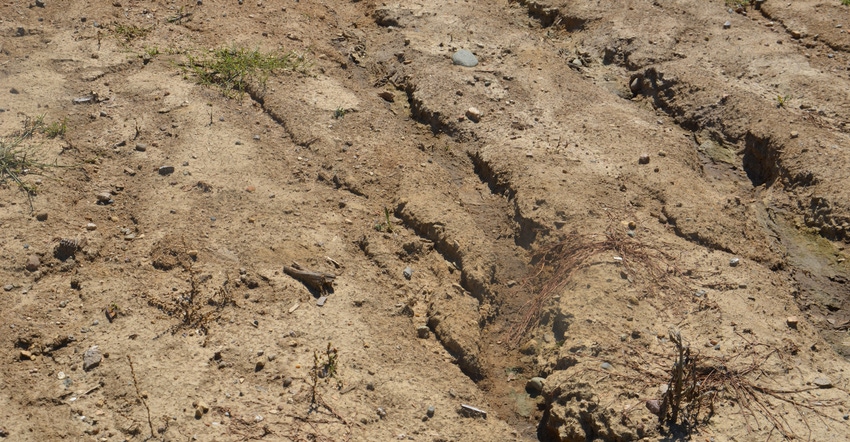September 7, 2021

The early summer months of 2021 provided extreme rainfall events. For example, southeastern Indiana recorded 4 to 6 inches in a 24-hour period and 12 to 15 inches over a week. Excess water can be problematic for tilled, unstable soil even with healthy crops. It also becomes extremely important to have healthy soils that will allow heavy rainfall to infiltrate the soil profile.
During harvest, every time you hit a rough, eroded area, there is a slight jarring of teeth. These ephemeral gullies are small channels formed in natural, concentrated water-flow areas that are normally easily filled or “erased” by annual tillage. Sadly, they typically develop again after additional runoff events. Anywhere water concentrates from a heavy rain, there is potential for ephemeral gullies, especially if the site is left unprotected.
On very gradual slopes, tillage is often used to erase damage. On fields that are no-tilled, ephemeral gullies stand out and disrupt spring planting. Disking or smoothing gullies will not fix the problem.
Let’s look very conservatively at how much soil leaves these sites. Let’s say a gully is only 4 feet across at the top and 2 feet across at the bottom, 2 inches deep, and 600 feet long. That erosion, which often happens in one rainfall event, could be 15 tons of soil lost. Usually though, it’s multiple events over the growing season, which can easily add up to 40 to 45 tons of soil lost. Longer and deeper ephemeral gullies can easily exceed 250 tons a year.
Even if we erase these gullies with tillage, valuable topsoil leaves the farm. If left alone, deep classic gullies can eventually form that are not as easily fixed.
Soil health alternative
Ephemeral gullies typically form after runoff events in areas that are disturbed and unprotected by residue and growing vegetation. Control of ephemeral gullies begins with minimizing runoff by improving water infiltration and protecting the soil surface through a soil health management system using the four principles of minimizing disturbance, maximizing soil cover, providing continuous living roots and maximizing biodiversity. Water infiltration is not only important to help prevent erosion but also vital for late-season crop development.
Using high-residue crops, 100% no-till and cover crops in the drainage area of ephemeral gullies or across the entire field are initial steps. This type of management system builds soil aggregate stability, allowing for more water infiltration and a more stable soil, which will reduce erosion.
Depending on slope, intensity of runoff events and overall health of the soil, ephemeral gullies may still form. Then the next step is to apply a vegetative practice.
Drilling a high rate of a winter grain after harvest in the channel area may suffice. Wheat, cereal rye or triticale are all effective. Seed as early as possible to achieve the greatest amount of top growth and roots. Drill in a serpentine pattern or across the slope.
Where annual winter species aren’t working, try small areas of perennial grass and avoid spraying for them. Tall grasses that are deep-rooted and somewhat tolerant of corn herbicides such as orchardgrass and switchgrass work well.
If minimal tillage and vegetative control measures aren’t working, the alternative is a structural practice such as water and sediment control basins, grassed waterways, or terraces.
Harrison is a district conservationist with the Natural Resources Conservation Service. He writes on behalf of the Indiana Conservation Partnership.
You May Also Like




